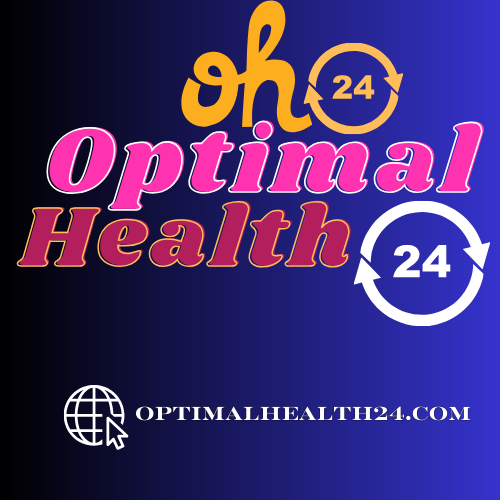Mental Health Awareness in the Workplace: Strategies for Small Business Owners and Marketing Professionals
Mental health awareness is crucial in today’s fast-paced and often stressful work environment. As small business owners and marketing professionals, understanding and promoting mental well-being in the workplace can significantly impact productivity, employee satisfaction, and retention. This blog post will delve into the importance of mental health awareness and provide practical strategies to foster a mentally healthy work environment.
Recognizing the Signs of Mental Health Issues
Recognizing the signs of mental health issues is the first step toward creating a supportive environment. Some common indicators include:
Creating a Supportive Work Environment
A supportive work environment can make a significant difference in employees’ mental well-being. Here are some strategies to consider:
Encourage Open Communication
Encourage open communication by creating an atmosphere where employees feel comfortable discussing their mental health. Regular check-ins and anonymous feedback channels can help facilitate this. For example, a small marketing agency implemented weekly one-on-one meetings where employees could discuss any concerns without fear of judgment.
Offer Flexible Work Arrangements
Offering flexible work arrangements such as remote work options or adjustable hours can help employees manage stress and maintain a healthy work-life balance. Research shows that flexible work schedules can reduce stress levels and improve overall job satisfaction.
Provide Mental Health Training
Provide mental health training for managers and employees to help them recognize signs of mental health issues and respond appropriately. Training programs can include workshops, webinars, and online courses.

Mental Health Awareness in the Workplace: Strategies for Small Business Owners and Marketing Professionals
Encouraging Effective Coping Strategies
Encouraging employees to adopt effective coping strategies can promote mental well-being. Some practical approaches include:
Mindfulness and Meditation Practices
Introduce mindfulness and meditation practices to the workplace. These techniques can help reduce stress and improve focus. Consider setting up a quiet space where employees can take short breaks to meditate or practice deep breathing exercises.
Promote Physical Activity
Encourage physical activity by organizing group workouts or providing gym memberships. Regular exercise has been proven to reduce anxiety and depression while boosting overall mood.
Access to Professional Mental Health Resources
Ensure employees have access to professional mental health resources such as counseling services or employee assistance programs (EAPs). Providing information on how to seek help can make a significant difference.
Benefits of Investing in Mental Health Initiatives
Investing in mental health initiatives offers numerous benefits, including:
Reducing Stigma
Initiating conversations about mental health can help reduce stigma and encourage employees to seek help. Here are some tips:
Conclusion
By fostering a mentally healthy work environment, small business owners and marketing professionals can enhance productivity, employee satisfaction, and retention. Implementing strategies to identify signs of mental health issues, create a supportive environment, and encourage effective coping mechanisms can make a significant impact. Start conversations, reduce stigma, and empower your employees to seek help when needed. Together, we can create workplaces that prioritize mental well-being.
Step-by-Step Guide to Prioritizing Mental Health
Here’s a clear, step-by-step guide to help you get started:
Implementing these steps can help you create a workplace that prioritizes mental health and supports your employees’ well-being.
How to Craft Hooks That Captivate and Offer Value to Your Audience?
As a small business owner or marketing professional, you know the importance of grabbing your audience’s attention right from the start. An effective hook can make the difference between a reader who stays engaged and one who clicks away. This comprehensive guide will show you how to craft hooks that not only captivate but also offer value to your audience.
Why Bother Reading?
Your audience is constantly bombarded with information. To stand out, you need to give them a compelling reason to keep reading. A strong hook accomplishes this by immediately addressing a pain point or offering a tantalizing benefit.
How the Hook Can Help Solve a Problem?
An effective hook quickly communicates that the content will help solve a problem your audience faces. For instance, “Are you struggling to convert website visitors into customers? Learn how a few simple tweaks can boost your conversion rate by 30%.” Here, you’re directly addressing a common issue and promising a specific, quantifiable outcome.
What They Will Learn?
Make it clear what the reader will gain from your content. For example, “In this post, you’ll discover five proven strategies to enhance your social media engagement.” This sets clear expectations and encourages the reader to invest their time.
Actionable Tips for Crafting an Effective Hook
Creating a compelling hook doesn’t have to be a daunting task. Here are some actionable tips:
Poke at Pain Points
Identify the biggest challenges your audience faces and use them to craft your hook. For example, “Tired of seeing your ad spend go to waste? Here’s how to make every dollar count.”
Add Credibility via Quantifiable Proof
Use statistics and data to build credibility. For instance, “Learn the email marketing strategy that increased our open rates by 45% in just one month.”
Get Specific with Outcomes
Highlight the specific benefits your content offers. “Find out how to streamline your workflow and save two hours every day.”
Leave a Cliffhanger
Engage curiosity by leaving something unresolved. “Discover the secret ingredient that transformed our customer retention rates—but only if you read to the end.”
Case Studies and Examples
Consider this example from a small business blog: “How John’s Plumbing Increased Their Client Base by 50% in Three Months Using These Simple SEO Tricks.” This hook is effective because it addresses a common desire (more clients), provides a time frame (three months), and hints at a solution (SEO tricks).
Supporting Data and Research
According to a study by Microsoft, the average human attention span is now just eight seconds. This makes it crucial to capture interest immediately. Additionally, Content Marketing Institute reports that 72% of marketers believe content creation is the most effective SEO tactic. Therefore, a strong hook is essential for maximizing the ROI of your content marketing efforts.
Step-by-Step Process for Crafting Hooks
Follow these steps to create your effective hooks:
- Identify your audience’s main pain points.
- Decide on the primary benefit your content offers.
- Incorporate data or proof to add credibility.
- Be specific about the outcomes your audience can expect.
- Consider using a cliffhanger to pique interest.
By following these steps, you’ll be well on your way to crafting hooks that capture attention and drive engagement.
Step-by-Step Guide to Prioritizing Mental Health for Working Professionals and Small Business Owners
As a working professional or small business owner, your mental health is crucial for both personal well-being and business success. This actionable guide will help you prioritize your mental health by identifying stressors, setting boundaries, and incorporating self-care routines into your daily life.
Why Mental Health is Crucial for Productivity and Business Success?
Mental health directly impacts your ability to focus, make decisions, and interact positively with others. Poor mental health can lead to decreased productivity, increased absenteeism, and even physical health issues.
Identifying Stressors
The first step in prioritizing mental health is to identify what’s causing you stress. Common stressors for small business owners and professionals include workload, financial pressure, and work-life balance. Keep a journal to track your stress levels and identify patterns.
Setting Boundaries
Once you’ve identified your stressors, the next step is to set boundaries. Here are some tips:
Incorporating Self-Care Routines
Self-care is essential for maintaining mental health. Here are some practical tips:
Recognizing Early Signs of Burnout
Burnout can sneak up on you, so it’s important to recognize the early signs. These include chronic fatigue, irritability, and a lack of motivation. If you notice these symptoms, take immediate action to address them.
The Importance of Taking Breaks
Breaks are not just a luxury; they are a necessity. Research shows that taking regular breaks improves focus and productivity. For example, the Pomodoro Technique involves working for 25 minutes and then taking a 5-minute break. This can help you maintain high levels of productivity throughout the day.
Strategies for Maintaining a Work-Life Balance
Maintaining a work-life balance is crucial for long-term mental health. Here are some strategies:
Case Studies and Examples
Consider the example of Sarah, a small business owner who was on the brink of burnout. By implementing a self-care routine that included daily exercise and mindfulness, she was able to regain her energy and focus. As a result, her business saw a 20% increase in productivity.
Supporting Data and Research
According to the World Health Organization, mental health conditions cost the global economy $1 trillion in lost productivity each year. Additionally, a study by Deloitte found that poor mental health can reduce productivity by up to 40%. This data underscores the importance of prioritizing mental health for both personal well-being and business success.
Step-by-Step Process for Prioritizing Mental Health
Follow these steps to prioritize your mental health:
- Identify your main stressors and track them.
- Set clear boundaries to separate work from personal life.
- Incorporate self-care routines into your daily schedule.
- Recognize early signs of burnout and take immediate action.
- Maintain a work-life balance by delegating tasks and making time for personal activities.
By following these steps, you’ll be well on your way to maintaining your mental health and ensuring long-term business success.






